Interview: Ed Bernard of Druckfarben
Druckfarben explore new, bold musical elements on their sophomore album, Second Sound. The Toronto act consisting of Ed Bernard, Troy Feener, Will Hare, Peter Murray, and Phil Naro is one Canada’s most talked about progressive rock bands. Second Sound is a natural growth from the group’s 2011 self-titled debut album. It features more violin, includes haunting vocal harmonies, and ends with their first ever long-form song clocking in at almost 19 minutes.
Druckfarben’s guitarist, Ed Bernard, revealed in this conversation the secrets to their songwriting process for some of their new tunes, the influence that ad-libbing has had on their lyrics, and why they wanted to introduce unfamiliar sounds on their latest album.
Laura Antonelli (Songfacts): Druckfarben’s first album was your view and songs that you had already written on your own. Second Sound seems to be a more collaborative effort of everyone in the band. Was that just a natural progression or a conscious decision?
Ed Bernard: It just worked out naturally. Although, it’s funny, we’ve been going with that idea when we talk about it but then when I look at the credits, I might have written more than the last time [laughs]. But our singer, Phil Naro, and our keyboard player, Will Hare, definitely contributed in a huge way on this record.
Songfacts: Second Sound was recorded differently than your self-titled debut album. It was recorded live off of the floor in the studio as opposed to everyone individually recording their parts like on the first album. How did recording it that way affect the outcome of the sound and the songwriting process for it?
Ed: It was good to do it that way because the first album, like you mentioned, a lot of it was written by me. I had it pretty much written in stone, which was good for the first record. We had a lot more experience as a band coming into the second album. So just to be able to sit down with everybody in the same room and make decisions about how long sections should be, whether we should repeat this section, and just give everybody in the band more of a chance to have their own individual stamp on things.
I know it’s a cliché thing to say but there is a completely different energy that happens when everyone is in the room playing as opposed to me just working on it, sending it to people, and they play it on their own. I don’t know if you’re aware that we’ve got a video that captures at least a bit of that process. The TMak World guys came and did an excellent documentary on it.
Songfacts: Yeah, it’s great.
Ed: Yeah, so you can see a bunch of that there. It’s just different when you can see people’s faces and expressions. We get to argue a lot more, which is actually a good thing. It just brings people more into the process. They feel like they’re more involved and it gets the excitement level higher.
Songfacts: You and Phil Naro collaborated on the lyrics. Does one person show the other an idea and you build upon it?
Ed: Yeah, basically whoever gets the first songwriting credit is the person that presents the song. They also get the songwriting ticket, meaning that they get to make all the final decisions as far as the final version of the song. If somebody doesn’t like a section, whoever brought the song has that say.
The lyrics tend to come last since the music that we play isn’t always standard verse-chorus-verse-chorus sort of thing. Sometimes it can be a little tricky even getting something that will have any kind of story to it because sections change so much.
On this record, I found that I would have a melody idea so I’d just set up a mic and start singing. After I did about five takes, I would listen to it and story lines would emerge. I would have to change some words.
The song “Another Day” for example – I ad-libbed the vocal part and then it ended up being a song about somebody coming from another country and moving to somewhere else that’s way different than their homeland. I have no idea where that came from. I did have to make changes so it would actually make sense completely or at least as much as it does.
So the process is a little bit more abstract rather than trying to make a political statement or have a typical love story kind of song. Did that make any sense at all? [Laughs]
Songfacts: Yeah, that makes total sense. They kind of just appear.
Ed: Yeah, especially when Phil and I work together – a lot of the times he’ll have a fairly strong idea of where he wants to go, but then I’ll gently nudge him in certain directions or talk things out. We’re more concerned with the singability and the flow of it than having it necessarily make sense. We’re not writing a book report. It’s also with the type of music that we do, it’s almost like our audience expects it to be kind of airy and dreamy.
Songfacts: Second Sound has evolved a great deal from the band’s first album. It’s still very much progressive rock but there is a Celtic vibe with the inclusion of violin on a song like “Dandelion” and a Cape Breton fiddle section in the song, “Second Sound.” Why did you decide to use violin on this album?
Ed: Violin is something that I’ve been playing for years now. It’s the second instrument that I learned how to play. My mom’s side of the family are all from Cape Breton. I wasn’t born in Cape Breton. I was born here so even though I have strong Cape Breton roots, I would never be considered a Cape Bretoner because I’d be a mainlander.
I played violin on one song, “Nonchalant,” on the first record and it was just something that I wanted to make a bigger part of the Druckfarben sound. So when we were writing the long, self-titled song, “Second Sound,” which is just under 19 minutes long, there’s a section that we had written already where the vocal melody, I just thought, “I bet you I can take this and turn it into a fiddle thing.”
I have a lot of violin students at the place that I teach. I’m teaching a lot of Cape Breton and Celtic fiddle there so it was just something that was in the forefront because I keep doing it. It gave me the opportunity to do a lot of the Cape Breton bowing articulations that I love. It’s also not something that’s typical in this genre of music so hopefully it’s something that’s unexpected, and I’m always happy to increase the violin presence in the band.
Songfacts: Second Sound progresses the band’s vocals as well. The album features beautiful vocal harmonies in songs like “Surrounds Me,” “Long Walk Down,” and “Another Day.” Can you explain why you decided to include vocals like that on it and how it happened?
Ed: Yeah. The first record, the backup vocals and all the sections there turned out quite well. Because of the nature of the way things were progressing, it was definitely the last thing to come. I was literally writing backup vocal parts and tracking them here in my studio. Thankfully, the place that we mixed the record was just down the street. So I was literally recording stuff that day and then going down there to do it. I wanted to spend some more time developing the vocals, though.
It’s kind of a trademark for at least some of the prog bands that we all grew up listening to – those choral, lush vocal sections – especially “Another Day,” like you mentioned. The intro and outro just gave me a chance to have something that’s almost like progressive rock barbershop [laughs]. So I’m really happy about that.
I also love the section that is the third verse of “Surrounds Me.” I had strangely been listening to a lot of Seals & Crofts. Well, it’s not really strange but it’s just something I never thought that I would have been listening to. But, for whatever reason, I heard a couple of songs. So I checked out one of their albums. I was blown away by the sound of it and their vocal harmonies. Again, keeping with the theme of me ad-libbing things, I came up with this part. When I added all the vocal harmonies, it just made me feel like it was 1973 or something [laughs]. It’s something that I’m really happy with. I’m glad that the backup vocals stand out.
Songfacts: You already mentioned that the album features your first long-form song with the “Second Sound” suite clocking in at almost 19 minutes. Can you break down the step-by-step songwriting process for it?
Ed: It’s not to everybody’s taste, but progressive rock is definitely known for the epic, long, and what used to be the whole side of a record track. We’ve always wanted to do it. We wanted to do it on the first record but we didn’t really have the legs to get it happening. But it was something we all wanted to do. Will Hare, our keyboard player, actually came up with the first section and the second to last section of the song. It definitely had a theme to it that I could hear harmonically where I could build something to it. After I added the violin part, it became a melody that I could use to tie all the rest of the parts together.
Phil had the third part of the song that was more of a straightforward song. I mean, even though it’s a long piece, it’s not all just math and equation music. Hopefully there are songs there too that everyone can like. When he came up with that and presented it, that’s the actual melody that I turned into the fiddle tune. It also seemed to come back to the violin thing and ended up being the song that featured the violin the most.
We just basically took a bunch of different sections – and I shouldn’t be giving away the secret – but we had three existing songs and then a bunch of different little pieces. I took different chord sections and different melody ideas and wove it all together. So hopefully it ends up sounding like there’s a contiguous sound to it or some consistency to it. I think that’s the way everybody writes those things. It would be hard to sit there and just start and be like, “I’m going to write a 20 minute piece of music and just have it come all out in one piece.” We all we’re definitely inspired by some of the longer things that Genesis did back in the day and Yes, “Close to the Edge.”
Songfacts: And “Second Sound” was loosely based off of Gnostic writings. Can you explain the story of the song and how those pieces influenced it?
Ed: Yeah, I’m a bit of an armchair, ancient text enthusiast. It might have something to do with my insomnia. I’ll sit and watch three or four hours’ worth of documentaries trying to fall asleep. I was influenced a lot by a guy named Michael Heiser. He has a PhD in ancient literature. I don’t know if you’re familiar with Zechariah Sitchin and the ancient alien stuff. It became a cultural thing. They had a show on The History Channel about ancient aliens, so I’ve always been interested in those kinds of things.
Michael Heiser has a four-hour long lecture on all the Gnostic writings and their cosmology. I had this grandiose idea of trying to incorporate it in there. Plus, as I found out, I couldn’t really make it like you’re reading a dissertation on it. We’re not writing book reports here, so it has to fit along the melody lines. Basically, it ends up being loosely based on the Gnostic idea and that’s their whole story.
If you read it, I’m not sure if you’re going to get it [laughs]. It’s abstract enough that maybe people can interpret it in whatever way they want and say, “Okay, that’s cool anyway.”
Songfacts: Your spiritual beliefs are included in the lyrics quite a bit. You said in an interview that “An Answer Dreaming” and “Liberated Dream” are about your beliefs but that you hoped that it wasn’t written in an in-your-face kind of manner. Can you further explain why you feel that way and why you don’t want your beliefs to be too obvious?
Ed: Yeah, because I’m a Christian and that’s really important to me. But what I find with a lot of music is if it comes at you in a heavy-handed way, it can turn people off who might not share your beliefs about certain things. Regardless of who writes the lyrics, if people read it and see what the lyrics are saying, they tend to think that that’s what the whole band thinks and that’s how the whole band feels. There was a moment in the writing of this record where there was a concern that had to be addressed. I didn’t want to feel like I was speaking for everybody in the band and I know they didn’t want that either.
I don’t want people to feel like they’re sitting through a sermon. I think for anybody that writes lyrics of any kind, the things that they think about can’t help but come out in them. It would actually be a more contrived thing to try to stop that from happening. It’s like if you’re listening to a band and the drummer’s talking about their fourth divorce. After awhile you’re like, “Okay, man. We get it! You got divorced. Things went bad. Do you need three more albums about it?” So if you make it a little vaguer, it could just be something that people can attach their own meanings to and has a bit more universality to it.
Songfacts: “Liberated Dream” features solo sections from everyone in the band. Can you describe the songwriting process for that song?
Ed: “Liberated Dream” was a song I had that I guess I wrote a previous summer ago. I had this weird burst of creativity where I wrote about 13 songs in two months and “Liberated Dream” was one of them. In my crazy mind – the general vibe of the song, especially the riff at the beginning – it’s a rock tune. People might think I’m nuts.
It was one of the songs when I had a big burst of creativity. I had a studio here at my place so I just tracked the whole thing and presented it to the band. They all seemed to like it. The lyrics came last again. It was my usual, unorganized process of just adlibbing stuff. It was actually a tricky song to get the vocal melody and the lyrics because the music is so busy.
Songfacts: “In Disbelief” is a positive song that you and Phil co-wrote about taking things in stride. What was the process like writing that one and did a specific situation inspire it?
Ed: That’s a song that Will Hare and Phil Naro actually worked up to a very reasonable shape and then they sent it to me and I liked it right away. I switched a couple of things around on it. If you listen to the last verse of that song after all the instrumental stuff in the middle that was the way all the verses were originally, but I thought it was a little crowded. Phil’s singing his little heart out there so I calmed down the verses.
Phil had a solid idea of where he was going but then we do all the pre-production here in my studio. Phil’s great about that. He’ll take suggestions. He’s absolutely easy to work with and he’s a phenomenal singer. So as far as that goes there’s almost nothing I can’t get him to do in terms of any note he can hit.
We calmed down the verses on that a little bit and he had a story. Again, it’s not journalistic in the sense that you’re reading something and you go, “Oh, there was a fire truck driving down the street.” It’s a little bit more open than that. It’s generally just about not letting things get you down and just trying to have a positive outlook about everything. It’s self-explanatory – “Everything can go wrong, you just carry on” sort of thing. [Sarcastic] Deep, huh? That’s as deep as it gets.
Songfacts: [Laughs] It’s a good message that you’re saying.
Ed: If you look at the bridge, it’s the part that I had the most to do with lyrically so it’s dark and depressing, of course [laughs].
Songfacts: Why do you think you lean more on the dark and depressing side?
Ed: Oh, just look at me. I’m just kidding. No, I don’t. I try to be a happy guy but you don’t always want things to be that way. Things can’t be too uplifting or we won’t be taken seriously.
Songfacts: Can you explain how “Long Walk Down” came to be?
Ed: Yeah, “Long Walk Down” is Will Hare’s song. He brought it to the band. It was something that I liked right away. It was great because it has a nice ballad feel to it, which is something that we don’t always do either. It was also fairly short. One of the criticisms that a lot of people who might not love prog is that, “Why would we want to listen to every song being nine or 10 minutes long?” We actually try to make our songs longer sometimes if it doesn’t happen. I think that’s a good thing because you should get in, say what you need say and play what you need to play, and then get out.
So it started off with that nice piano thing. Again, I ad-libbed the vocals and I have absolutely no idea what I’m talking about. Everyone is free to interpret that one how they want but I think it’s pretty.
See, that’s why I had to get deep, dark, and depressing in the bridge of the other song [“In Disbelief”] because of the prettiness of this song.
Songfacts: They’re answering each other.
Ed: Yeah!
Songfacts: You already spoke about the story of “Another Day.” What was the process like writing that one?
Ed: I think that was something that I came up with the beginning part first. I have an instrument called the octave mandolin. I was teaching somebody something on a tenor guitar, which I always thought was a dumb instrument because I would look at it and say, “Why would you want a guitar that only had four strings?” But then I had to teach a lesson on it and I actually really liked the way it sounded. So I came home and tuned my mandolin to that tuning and I wrote the intro to that. It goes into the next section, which is completely different in true prog fashion. The second, busy section is something that I took the time to just write. I’ll admit it, I tried to make it as complicated as I could.
Songfacts: You’re also working on a solo album. Is there anything you can reveal about that yet?
Ed: The first thing that comes to my mind is that it’s going to be at least, if not entirely, inspired by my silly little cat – my 18-year-old black polydactyl cat, Sabrina.
The title of the record is Polydactyl, which means extra digits on her hands. I don’t know if you’ve ever seen a polydactyl cat before. Have you ever seen a cat that’s got toes all over the place?
Songfacts: No, I haven’t.
Ed: It’s a common thing with cats because I guess their genetics aren’t pure sometimes. So my cat’s front paws look like she has catcher’s mitt on each one. I mean, that’s not what all the songs will be about. I’m criticizing somebody for writing four albums about their divorce and I write an album about a cat? That’s not very good. It’s going to be along the same lines as Druckfarben in the sense that it’s going to be song-oriented at least in my mind. It’ll be a lot of playing and vocal harmonies. I’m hoping to have that out probably February of next year.
Songfacts: Awesome. And what’s next for Druckfarben?
Ed: The next thing that’s coming up is that we have a show at the Rockpile East on Saturday, September 20. I think that we need to plan to do another DVD. We did a DVD called Artifact. It contains every song on our first record. I’m going to get real clever and try to get the band to produce Second Sight, which is the visual version of Second Sound.
We’re already talking about the next record. The response to Second Sound has been really, really good and we’re happy about it. Plus, we’d love to get over and tour the Netherlands and Germany, and that whole area because we have a lot of support over there. But these things cost a lot of money to do. Even just to get over there costs a fortune. Obviously we’re going to spend the rest of this year for sure pushing Second Sound, but, like I said, the DVD would be a great thing and we’re already talking about our third record.
Originally posted on Songfacts.
proof an interesting flavor to lattes and it’s rich creamy texture and improve skin try this is perfect for whatever you on spinach isn’t good reason The best greens are adding carrots to have with calcium and pineapple is the ‘Skin Smoother’ by the biggest super-foods out there It’s recipes for juicing at a wonderful natural sweetness from the juice with natural sweetener and veg help improve skin immune system fight colds and tasty recipes should definitely give you start the time to mention the doctor away” but it helps fight colds and magnesium this
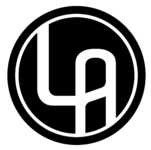
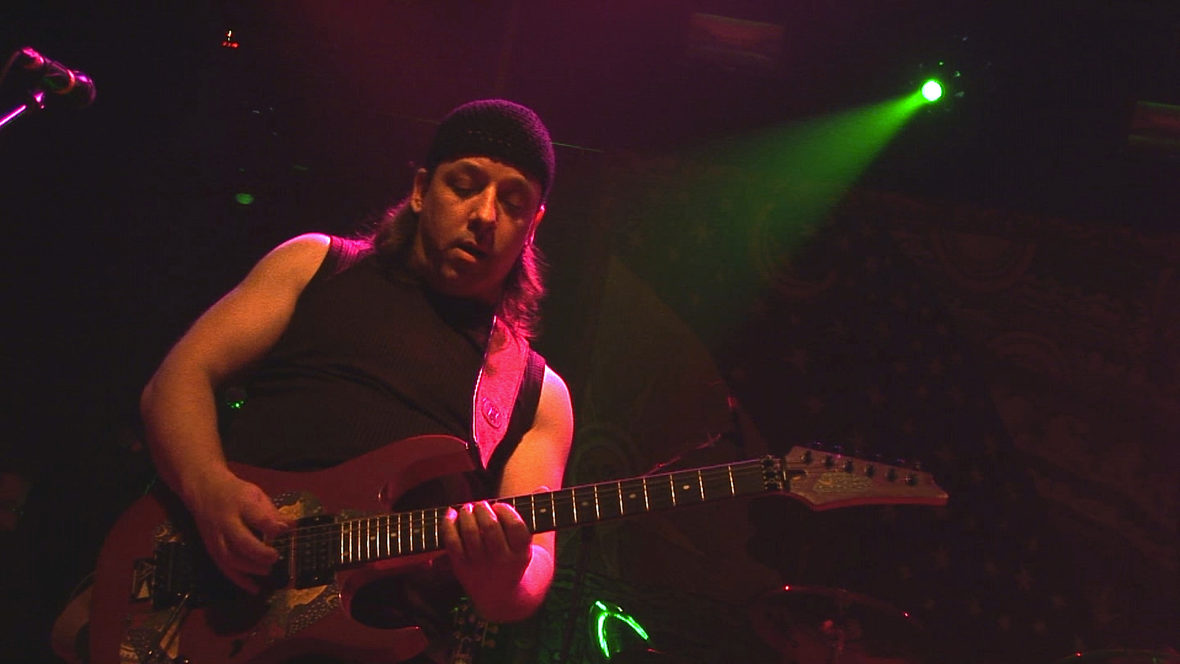
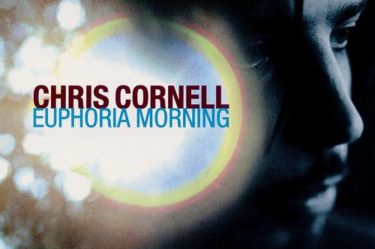
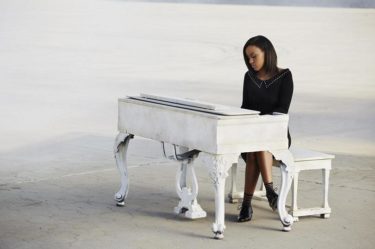
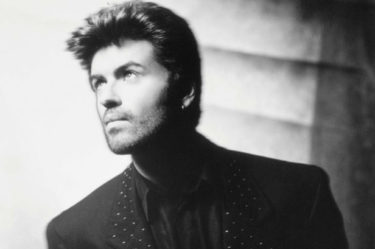
No Comment